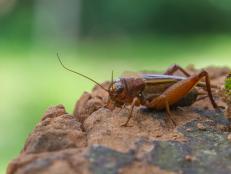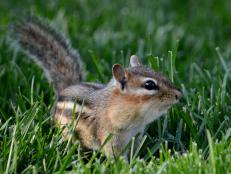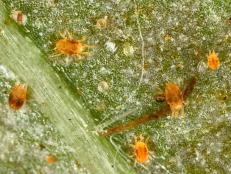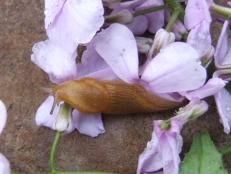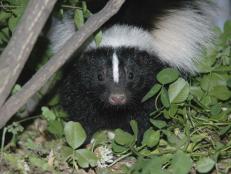How to Get Rid of Wasps
Identify and eliminate pesky wasp nests that affect your home and outdoor living areas.

Believe it or not, wasps do play an important role in any backyard ecosystem. Among their many benefits, they help keep other bug and insect infestations at bay and support pollination efforts. But when the nests are located inside or close to your home, consider the tradeoff and prioritize your comfort and safety. While only several types of wasps are highly territorial, any wasp that is disrupted and feels threatened will sting to protect itself and its nest. And unlike bees, wasps can sting multiple times with each sting, resulting in much discomfort.

Shutterstock/Daniel Loya
A yellowjacket wasp hive on the side of a building
Getting rid of a wasp nest early in the season is best; it will only continue to grow both in size and population by mid to late summer. It’s easy to overlook the presence of one or two wasps early in the season, but take pause when you see your first pests: That’s the best time to locate and eliminate a growing nest and get proactive about deterrents.
If you or anyone in your household has an allergic reaction to bee stings, consider hiring a professional to remove your wasp nest to reduce risk.
Types of Wasps
There are thousands of wasp species around the world and in North America. These native insects do help with bug and spider control throughout the year, but it is difficult for most homeowners to coexist when wasps set up their nest in the proximity of one’s home. Start by learning to identify the different types of common wasps and let that knowledge help you understand whether or not the nests need to be removed.
Paper Wasp
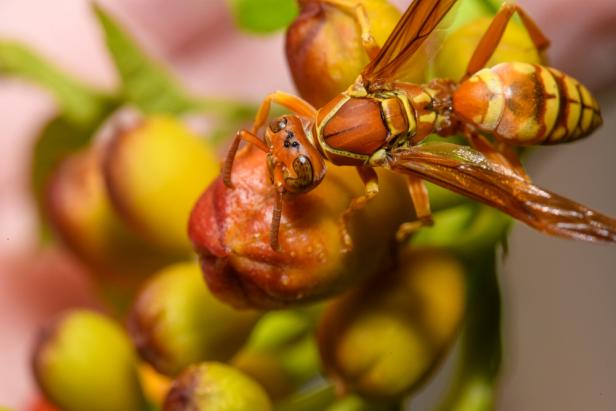
Shutterstock/Jeff W. Jarrett
Texas paper wasp
Paper wasps construct open nests, often compared to upside-down umbrellas. These papery nests often have visible honeycomb areas and are typically found hanging from trees or structures. While paper wasps themselves look similar to yellow jackets, you can distinguish them by their orange-tipped antennae and long legs that dangle when in flight. Paper wasps are territorial and don’t like having their nests bothered, but that said, they’re more interested in eating spiders than picnic food. You probably won’t have a reason to eliminate the nest unless it’s situated close to your house or patio.

Shutterstock/Fabrizio Guarisco
A paper wasps' nest hanging from a tree branch
Yellowjackets
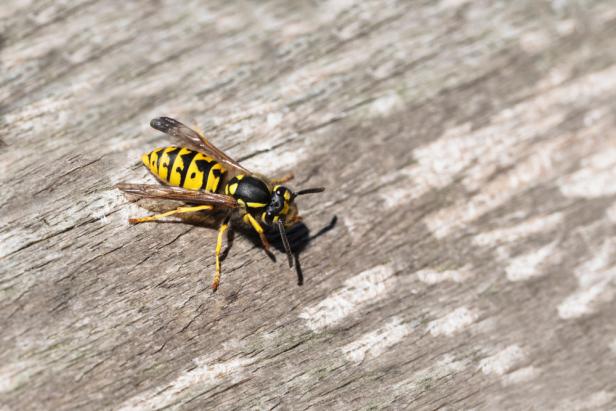
Shutterstock/Maren Winter
Yellowjacket
Notice aggressive and territorial wasps circling your grill and backyard picnic? Those are usually yellowjackets, identified by the distinct black and yellow pattern on their bodies. Measuring only a half-inch in length, these disruptors are drawn to the smells of fresh food and proteins and will feast on any dishes (or left-behind crumbs). Not only are they determined to interrupt your outdoor lifestyle, but they are also ready to put up a fight for their space. Yellowjackets will sting repeatedly if bothered, delivering painful, allergic reactions. The release of pheromones also alerts others in the nest about the presence of danger, essentially inviting more of the cohort to sting the enemy. They build their paper nests in a wide range of places, from a hole in the ground to the top of a hollowed-out tree. These nests grow in size over the course of the summer and are often as large as a cantaloupe fruit or a basketball.

Shutterstock/Nannycz
A yellowjacket nest in a hole in the ground
Mud Daubers

Shutterstock/Erik Agar
Mud dauber wasp
Named for the type of nest it constructs, mud daubers (or dirt daubers) build small, solitary one-inch-long mud nests on the sides of structures, under eaves or in porch or garage ceilings. These wasps are less aggressive than other wasps and are rarely as burdensome compared to a large nest infestation. You may be able to identify one by its dark metallic body with yellow-green markings. Mud daubers help keep the spider population at bay but rarely bother humans or pets.

Shutterstock/Jaclyn Vernace
A mud daubers' nest on an exterior wall of a building
Hornets

Shutterstock/Bruce MacQueen
Bald-faced hornet
Bald-faced hornets are some of the most aggressive wasps, identified easily by a black body with white markings and notably by size; the largest hornets reach nearly 1 inch in length.
If your geography is prone to cicadas, you might also recognize “cicada killer” hornets. These hornets are horrifyingly large — upwards of 2 inches long in my own experience — and strong enough to carry a full cicada back into its nest. They can sting humans but only would do so if threatened.
You may find hornet nests anywhere, but they’re usually in sheltered areas like in trees, tucked into bushes or on buildings, in attic spaces, porches and on other structures. Wasp colonies grow large nests over the course of a summer, often resembling the shape of a large egg or watermelon and measuring 1 to 2 feet in length.

A bald-faced hornets' nest in a bush near a house
How to Remove a Wasp Nest
Once you’ve identified a nest, take steps to safely remove it. While there are effective store-bought chemical sprays containing pyrethroids like cypermethrin available, you might want to start with safer options.

Shutterstock/David Calvert
Use a multipurpose pump sprayer to reach a wasp's nest high on a structure.
You'll Need
- dish soap
- water
- diatomaceous earth
- measuring glass
- multipurpose pump sprayer
- flat rock (ground treatments)
- weed-blocking cloth (ground treatments)
- Suit up. You don’t necessarily need to buy a beekeeper’s suit, but you should cover as much skin as possible with several layers of tightly woven fabric. Tuck your pant legs into your socks and the sleeves of your shirt into thick gardening gloves. Cover your head and face, too.
- Time your attack. Wasps are most active during the day, so wait until dusk to apply treatments. You will more successfully target wasps while they’re in the nest (versus out on the job) and reduce the likelihood of getting attacked as they will be less active after a long day at work.
- Choose your treatment. The treatment technique will vary by the location of the nest. If the nest is within arm's reach in a bush or on a wooden structure, you may simply want to douse it with a measuring glass filled with boiling water. For a nest out of reach, use a pump sprayer. A pump sprayer can reach 20 to 30 feet and is just as accurate and powerful as the common store-bought spray treatments. Ground wasps? You can eliminate an underground wasp nest using diatomaceous earth or hot, soapy water. Just be sure to cover the nest’s hole with a flat rock or a tarp to reduce the likelihood of escape.
- Apply the treatment. You can kill a large number of wasps using boiling water alone, but it may take several treatments over several days to make the nest unusable. If you’re using a pump sprayer, blast the nest from afar with warm, soapy water. The soap makes it more difficult for the wasps to fly and the water pressure penetrates the paper nest, making it uninhabitable. Again, you may find that you need to do this treatment for two or three evenings in a row, but it will be successful.
- Remove the nest. Once you no longer have wasp activity around the nest, you’re safe to remove the nest from the structure. A nest knocked down to the ground may even get cleaned up overnight by one of the wasp larvae’s natural predators — raccoons, skunks and mice.
How to Eliminate Underground Wasp Hives
Learn how to safely combat wasps and other insect pests that burrow in the soil.
Tips for Preventing Wasps
Hang Fake Wasp Nests
Inexpensive paper lanterns can double as faux nests around the exterior of your home. Hang them at the corner of your house, near your deck, under your eaves or in any other area where wasps have frequented in the past. Wasps will not be likely to create a new nest in the presence of imitation decor.

Shutterstock/Alexander Denisenko
Hang paper lanterns around your home to deter wasps.
Create a Wasp Trap
Hang traps around your yard early in the season to attract the initial wasps and thwart efforts to grow the nest. A wine-corked bottle with a hole drilled through the bottom is an easy solution. Put a tablespoon of sweet juice into the bottle so that it fills the bottom ridge of the bottle and hang it near your outdoor living area.
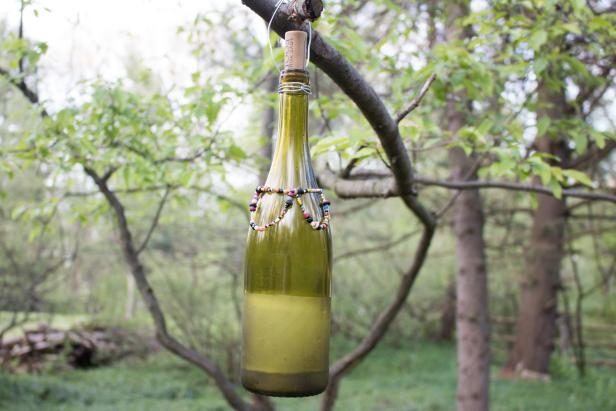
Emily Fazio, 2016
Upcycle a wine bottle into a wasp catcher.
Use Scent Deterrents
Wasps are lured by the smell of meats and sweet fruits, but you can repel them from your outdoor living areas by growing mint, basil, thyme or lemongrass. Essential oils like peppermint and eucalyptus diluted and sprayed around your living space make it easier to treat a wide area.








